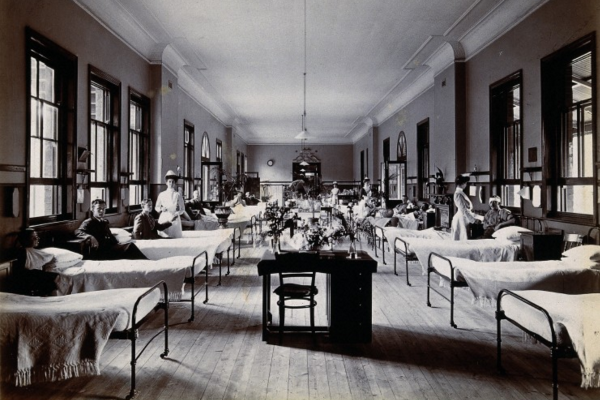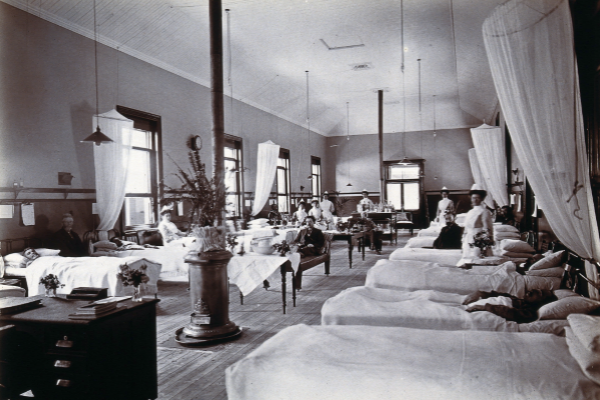In post-apartheid Cape Town or Johannesburg one may find the highest standards of medical care. In the small rural hospital in a poverty-stricken former homeland the very opposite is true. Doctors work with little equipment, without professionally trained nurses and without the slightest hope of ever changing the situation. Frank Eloff has long given up on the idea of improving things in this desolate place, but newcomer Laurence Waters is determined to make a difference. If this make him a “good doctor” – or at least a “better doctor” than his colleague – is one of the questions the novel raises during the following chapters. To begin at the beginning, here are a few suggestions for an introductory session on Chapter 1 and 2.
Teaching Ideas (Adult Education, B2)
1 Mindmaps on South AFRICAN CULTURE, HISTORY AND POLITICS
Time: 60 MIn.
Method:
Students work in small groups and compile mindmaps about what is commonly associated with South Africa. After group presentations of the different mindmaps, they develop a first rough timeline of South African history.
Celebrities Nelson Mandela, Mahatma Gandhi, Frederik Willem de Klerk, Desmond Tutu, Howard Carpendale, Oscar Pistorius, Culture Afrikaans, Swazi, Xhosa, Zulu Geography desert, savanna,coastal regions, Pretoria, Cape Town, Johannesburg, The Cape of Good Hope Politics blood diamonds, corruption, racial inequality Tourism safari, national parks,vineyards Wildlife sharks, lions, giraffes, elephants, penguins, poaching History Bushmen (100,000 B C) Discovery by the Portuguese (15th cebtury) Dutch settlers (17th century) British colony (1795) The Boer Wars between the British and the Dutch(19th century) 1912 Founding of the African National Congress (ANC) 1948 The beginning of the apartheid policy homelands, segregation, ethnic labels (blacks, whites, coloureds) 1964 Mandela arrested 1990 Mandela released from prison 1994 Free elections; Mandela becomes State President 2013 Death of Mandela
2 The Medical Staff in Galgut’s “The Good Doctor”
Time: 60 min.
Method:
Class Discussion:
a) Students summarize what they know about Frank Eloff and Laurence Waters after having read chapter 1 and 2:
- People wonder what had made Laurence volunteer for community service at the hospital.
- Laurence expects to find “a life of duty and meaning” (ch. 2, p. 16).
- Frank only vaguely remembers the time when it was “a consolation and comfort” (ch. 2, p. 16) to share a room with someone.
- Frank has become frustrated over the years. (ch. 2, p. 17)
b) Students briefly describe the situation at the hospital:
- Many doctors and nurses have left without being replaced.
- Tehego is the only remaining nurse.
- Jorge and Claudia Santander are colleagues who keep to themselves. There is an awkward silence at breakfast and later there is nobody at the office, though Claudia is supposed to be on duty.
- Dr Ngema is the head of the hospital; she likes to discuss protocol or procedure though there are hardly any patients; she doesn’t have any friends; she is a most incompetent surgeon but insists on operating herself; she hates to be contradicted or criticised.
Pair Work: In pairs students look through ch. 1 and 2 again in order to find references to South African history.
1 “This was not a town that had sprung up naturally for the normal human reasons […]. It was a town that had been conceived and planned on paper, by evil bureaucrats in a city far away, who had probably never even been here. Here is our homeland, they said, tracing an outline on a map […]. They made an X with red pen and all felt satisfied with themselves”. (ch. 1, p. 9)
2 “It’s where their puppet dictator lived. They hate this place.” (ch. 1, p. 10)
3 “It wasn’t just that Laurence Waters and I were doctors; it was that we were two white men, and we belonged in a room together.” (ch. 2, p. 12)
4 “An accident of history. A few years ago there was a line on a map, somewhere around where we’re sitting now. On the other side was the white dream, where all the money-‘” (ch. 2, p. 22)
The Cornelsen edition offers a short info text on “Bantustans (or homelands)” (p. 241f), which students may look at in order to explain how South African history has shaped the present:
The hospital is situated in a former homeland. Between 1959 and 1994 black people were forced by the white government to move to these homelands, where they were exploited as cheap labour by white farmers and miners. Since they were forbidden to leave the rural impoverished homelands, they were unable to seek employment in the industrial cities. The black elites (like “the puppet dictator”) did little or nothing to improve the living conditions of their own people but collaborated with the apartheid system.
Although segregation has now come to an end, the homeland is still underdeveloped. The hospital therefore cannot offer adequate medical care. Most of the funding goes to another hospital, a few kilometres away and probably outside the former Bantustan borders. It is obvious that the old structures still determine people’s ways of living and thinking, which is also why it is unacceptable for a white and a black man to share a room.
……………………………………………………………….
Source:
– Damon Galgut, The Good Doctor. Berlin: Cornelsen, 2015.
Illustrations:
Johannesburg Hospital, South Africa: hospital ward with nurses and male patients. Photograph, c. 1905. Wellcome Library, London. Available under CC BY 4.0 http://creativecommons.org/licenses/by/4.0/
Dr Rainer Hellerforth, Mindmap South Africa 2016
Johannesburg Hospital, South Africa: hospital ward with male patients. Photograph, c. 1905. Wellcome Library, London. Available under CC BY 4.0 http://creativecommons.org/licenses/by/4.0/



